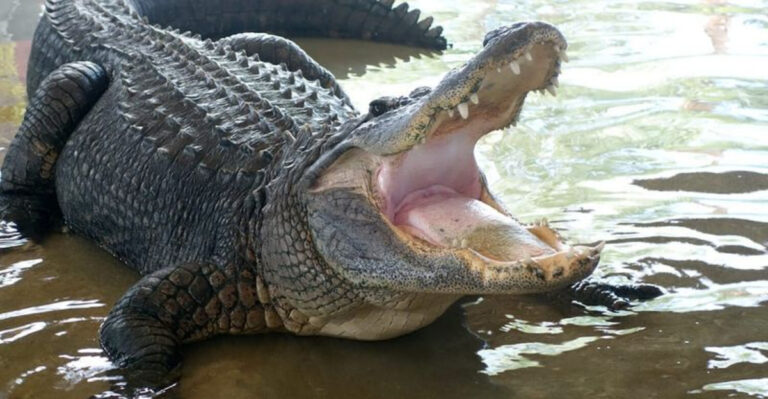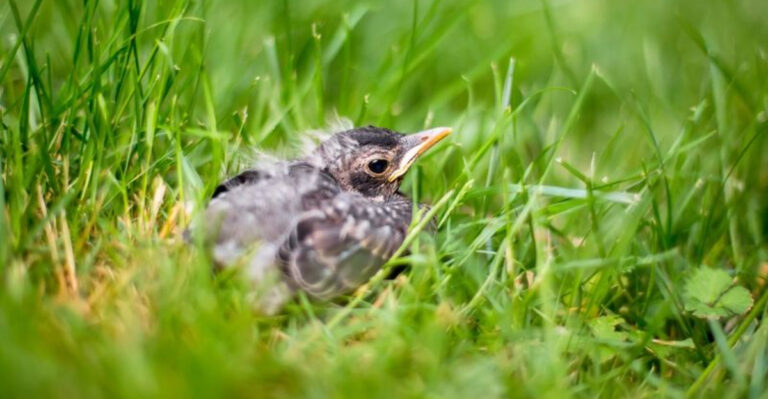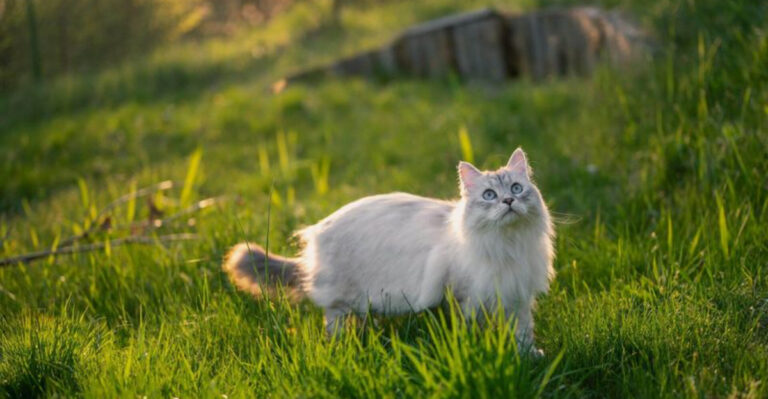10 Caterpillars So Dangerous, You Should Never Touch Them
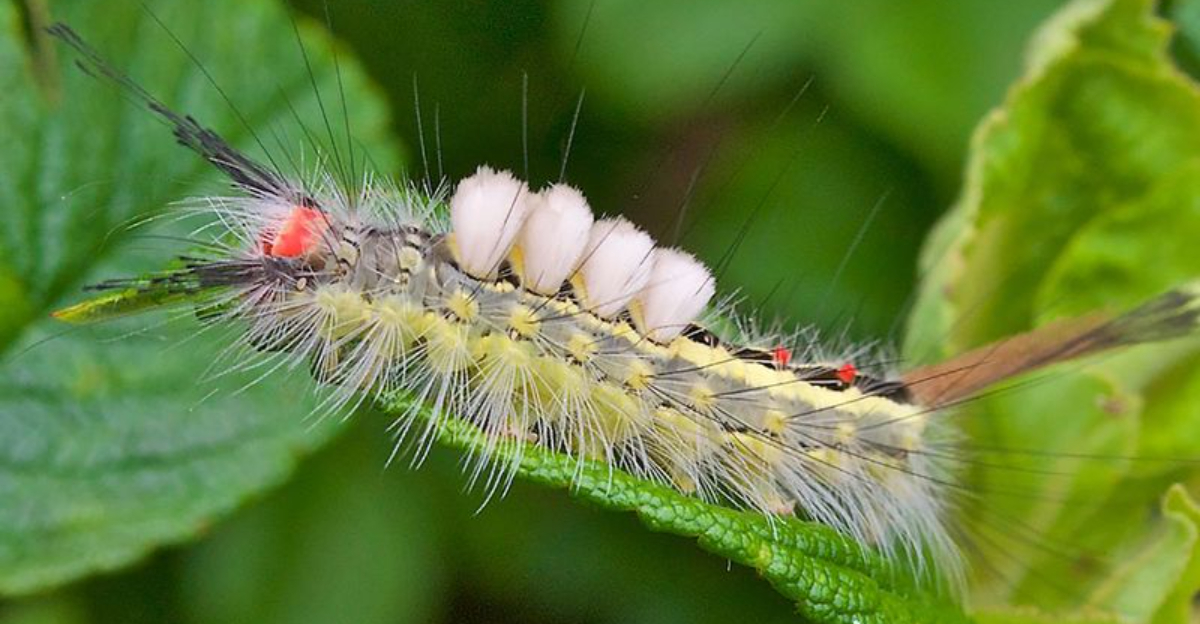
Most caterpillars seem harmless with their fuzzy bodies and slow movements, but some pack a painful – even deadly – punch. Hidden beneath colorful hairs or innocent appearances, these larvae can cause severe reactions ranging from painful rashes to life-threatening symptoms.
Whether you’re hiking in the woods or gardening in your backyard, knowing which caterpillars to avoid could save you from a trip to the emergency room.
1. Saddleback Caterpillar
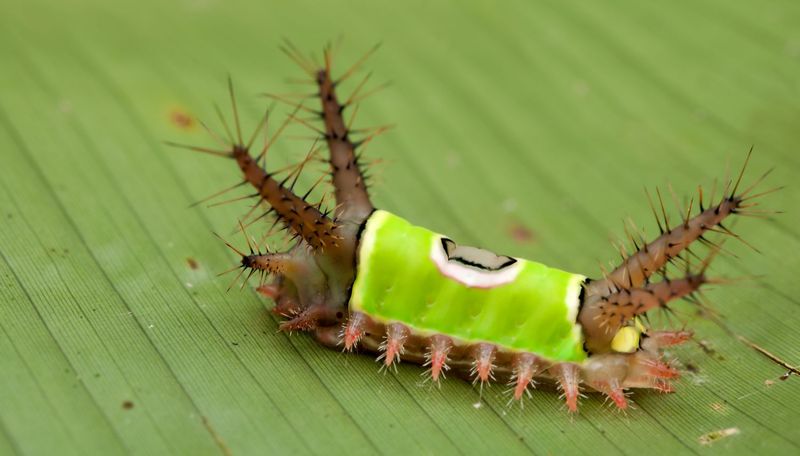
Bright green with a brown “saddle” on its back, this deceptively cute critter packs a serious wallop. The spines covering its body inject venom that causes intense pain, swelling, and nausea in humans unfortunate enough to brush against it.
Found throughout the eastern United States, saddlebacks love hanging out on the undersides of leaves in gardens and forests. Their stings feel like multiple bee stings concentrated in one area and can last for days.
If stung, remove any spines with tape, wash the area with soap and water, and apply ice to reduce swelling. For severe reactions, medical attention may be necessary.
2. Io Moth Caterpillar
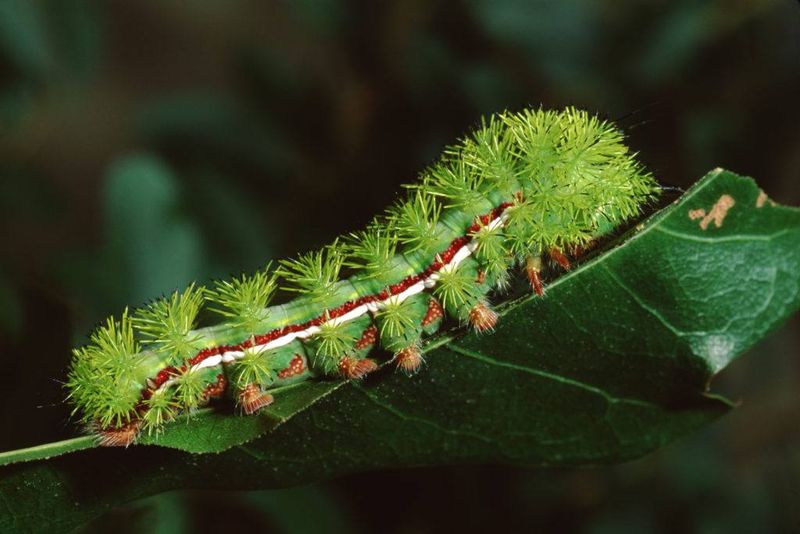
Lime green and decorated with red and white stripes, the Io moth caterpillar looks like something from a children’s book. Don’t be fooled by its festive appearance! Those branched spines contain toxins that cause immediate burning pain, inflammation, and sometimes headaches or nausea.
Common throughout eastern North America, these caterpillars feed on corn, roses, and over 100 other plant species. The pain from their sting can last several hours and feels like getting jabbed with hot needles.
Victims often describe the sensation as radiating outward from the contact point, making this beautiful creature one to admire only from a distance.
3. Puss Caterpillar (Asp)
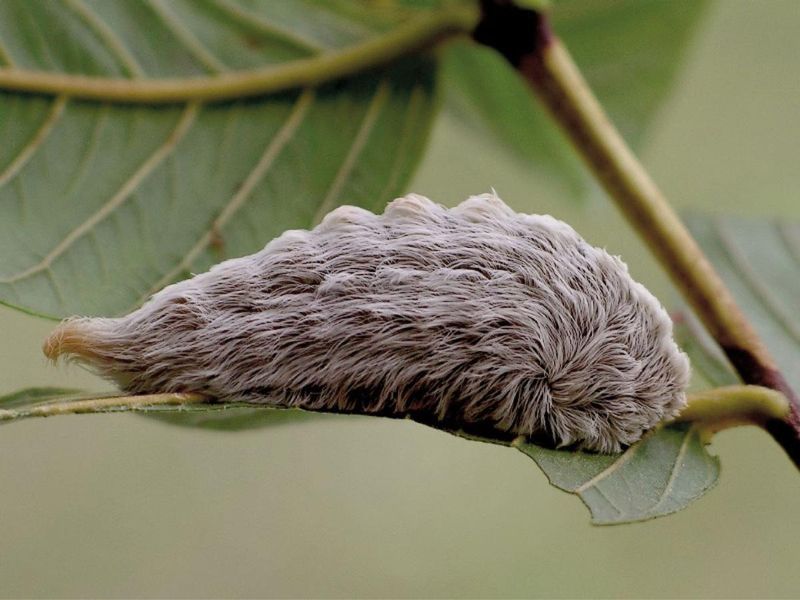
Don’t let the cuddly name fool you – the puss caterpillar is North America’s most venomous caterpillar! Resembling a small tuft of soft, blonde hair, this innocent-looking creature conceals hollow spines that deliver an extremely painful venom.
Victims report pain radiating to lymph nodes, breathing difficulties, and sometimes fever or vomiting. The intensity can be so severe that medical intervention is often necessary. These caterpillars frequently hang out on oak and elm trees in southern states.
The pain has been compared to a broken bone or scorpion sting, and some people experience symptoms for days. Medical professionals recommend immediate adhesive tape to remove embedded spines.
4. Hickory Tussock Moth Caterpillar
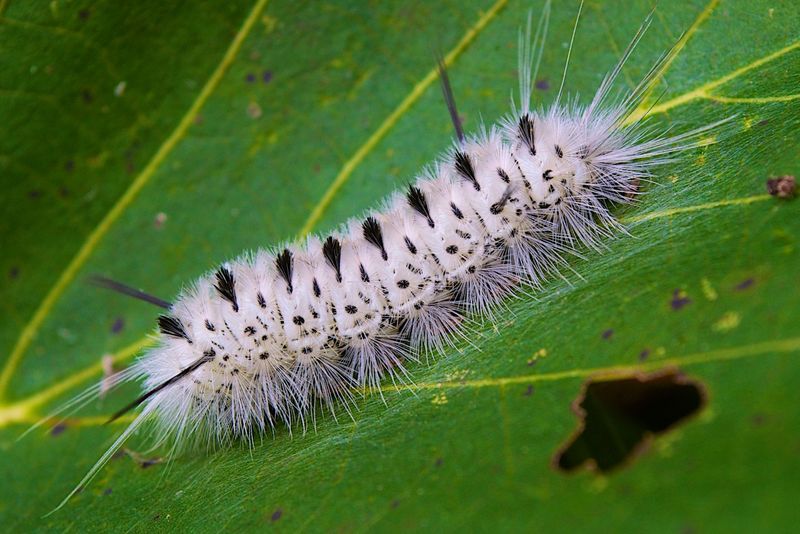
With its fluffy white coat and black spikes, the hickory tussock moth caterpillar looks like a tiny polar bear. Many children try to pet these fuzzy creatures, leading to painful consequences. Their hairs contain histamine-triggering compounds that cause itchy rashes similar to poison ivy.
Found throughout the northeastern United States and Canada, these caterpillars feed on various hardwood trees. The reactions they cause range from mild irritation to painful welts that can last for weeks.
For sensitive individuals, breathing problems may occur if the hairs become airborne. Always teach children that white, fuzzy caterpillars should remain untouched, regardless of how soft they appear.
5. Stinging Rose Caterpillar
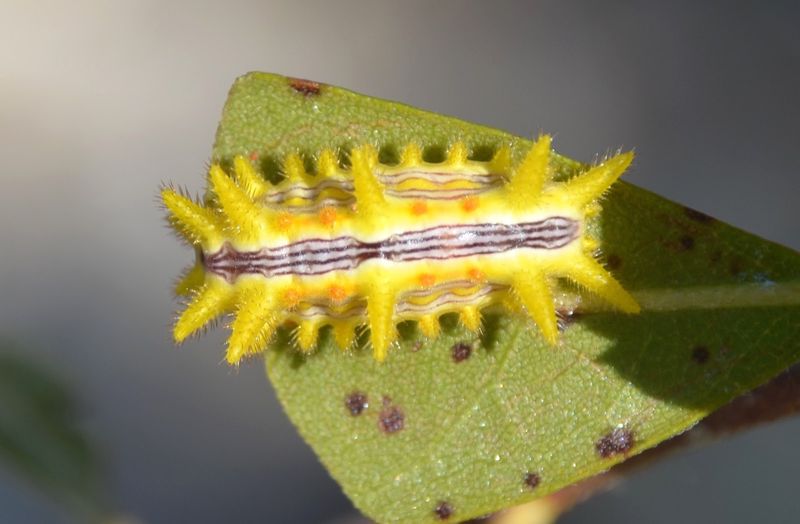
Sporting a kaleidoscope of colors – yellows, reds, and purples – the stinging rose caterpillar could easily win a beauty contest among larvae. Beneath its rainbow exterior lie clusters of venomous spines that deliver a burning sensation upon contact.
Found primarily in the eastern United States, these caterpillars feed on rose bushes, apple trees, and other plants. Their sting causes immediate pain followed by red welts that can persist for several days.
Gardeners often encounter these colorful creatures while pruning roses and experience unexpected painful surprises. The reaction severity varies by individual, with some people developing more extensive rashes than others.
6. Buck Moth Caterpillar
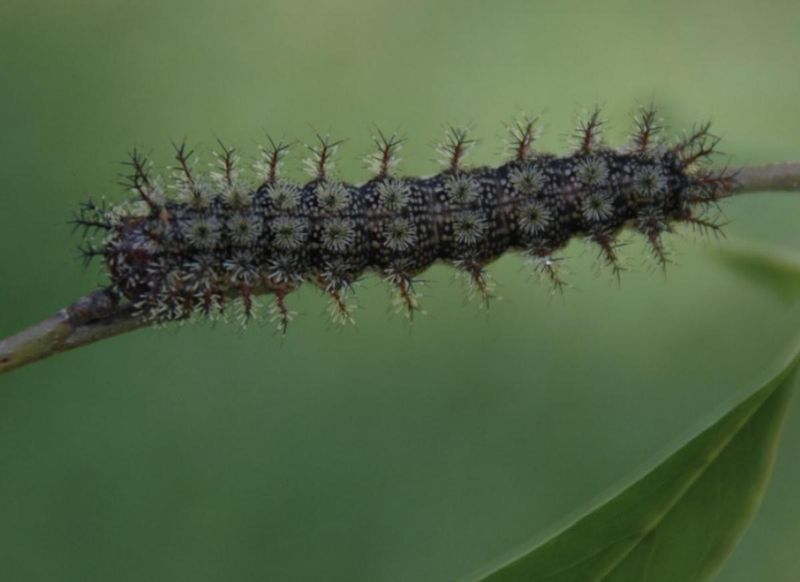
Black-bodied with rows of red dots and branching spines, buck moth caterpillars create quite the spectacle when they gather in groups on oak trees. Their defensive spines inject venom that causes an immediate burning sensation followed by intense itching and swelling.
These social caterpillars often travel in packs across the southern United States, especially in Texas and Louisiana. What makes them particularly dangerous is their tendency to drop from trees onto unsuspecting passersby.
The pain from their sting has been described as similar to a wasp’s but lasting much longer – sometimes up to a week. Outdoor enthusiasts should check overhead branches before setting up camp beneath oak trees in buck moth territory.
7. Spiny Oak Slug Caterpillar
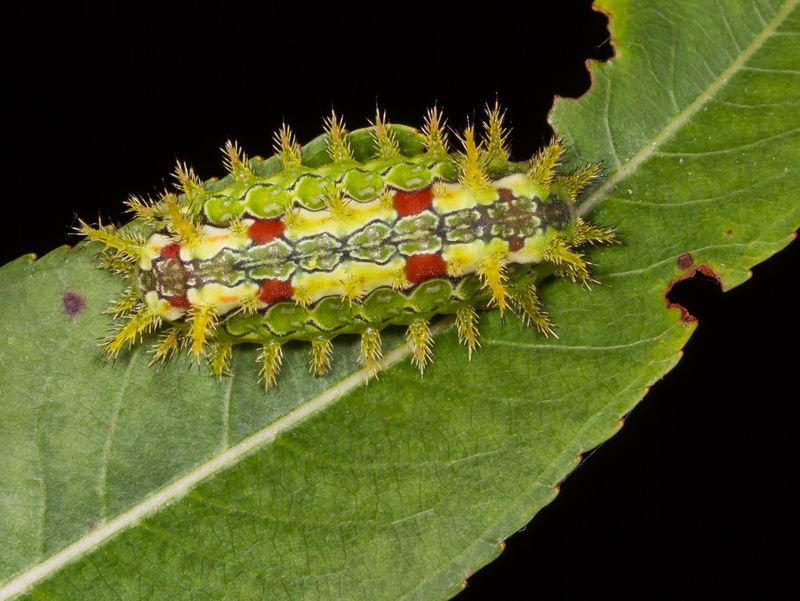
Despite its name, this isn’t a slug at all but a bizarre-looking caterpillar with a flattened green body covered in spines. The unusual creature appears almost alien with its geometric shape and crown of venomous spikes.
Found throughout eastern North America on oak and other deciduous trees, their sting causes burning pain and inflammation. What makes these caterpillars particularly tricky is their habit of clinging to the undersides of leaves, making them easy to grab accidentally while gardening.
The pain typically subsides within a few hours but can be quite intense initially. Their strange appearance often attracts curious children, so teaching young ones to avoid spiny creatures is essential in areas where these caterpillars live.
8. Hag Moth Caterpillar (Monkey Slug)
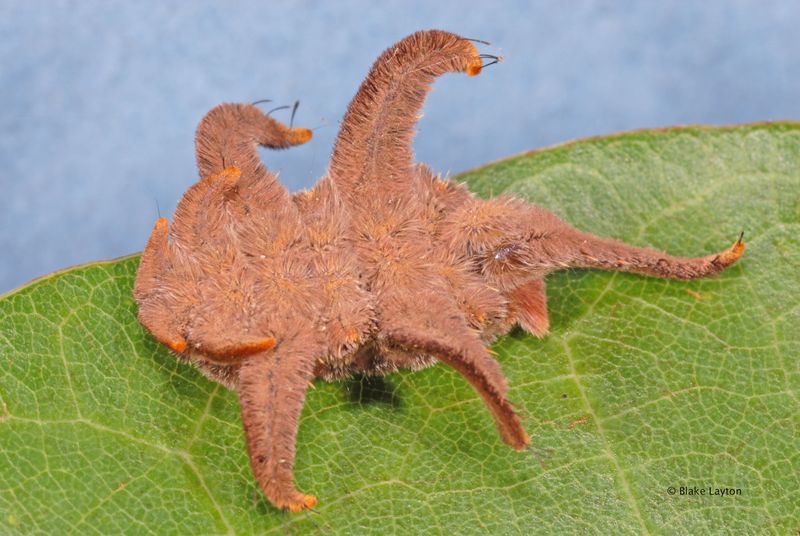
Resembling a hairy brown spider or tiny mop, the hag moth caterpillar (nicknamed “monkey slug”) is one of the strangest-looking insects you’ll ever encounter. Its bizarre appearance features nine pairs of fleshy, hairy lobes that contain stinging spines.
Found in eastern North America, these odd creatures feed on various deciduous trees. Their sting typically causes a burning sensation followed by redness and itching that can persist for days.
What makes them particularly dangerous is their excellent camouflage – they often look like dried leaf fragments or debris on forest floors. Hikers and children playing outdoors frequently pick them up without realizing they’re handling a venomous creature.
9. Crowned Slug Caterpillar
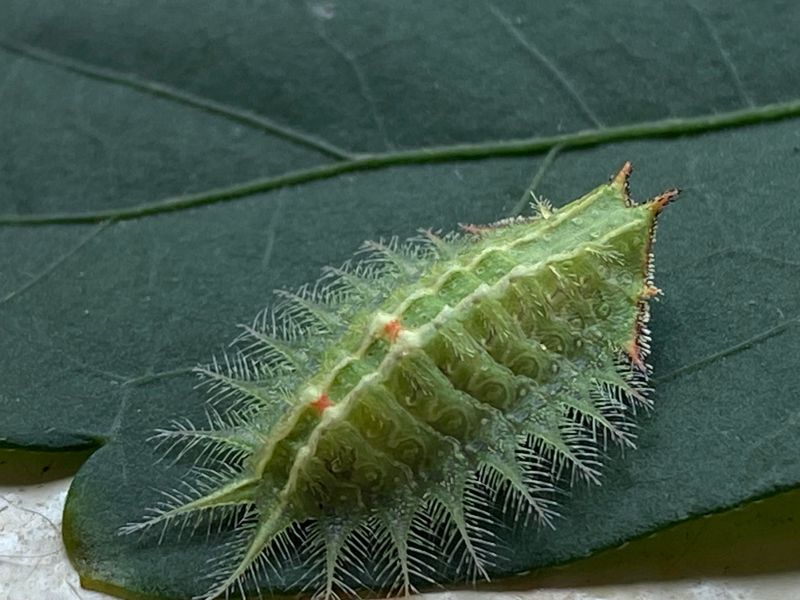
Sporting a translucent green body topped with what looks like a crown of thorns, the crowned slug caterpillar appears almost regal. Don’t bow too close to this royal pest – those crown-like protrusions are actually venomous spines that cause painful stings.
Native to eastern North America, these caterpillars feed primarily on oak and other hardwood trees. Their sting produces immediate burning pain followed by redness and swelling that can last for several days.
What makes them particularly hazardous is their tendency to position themselves at eye level on shrubs and low tree branches. Gardeners and hikers frequently get stung on their faces or necks while moving through wooded areas.
10. White-Marked Tussock Moth Caterpillar
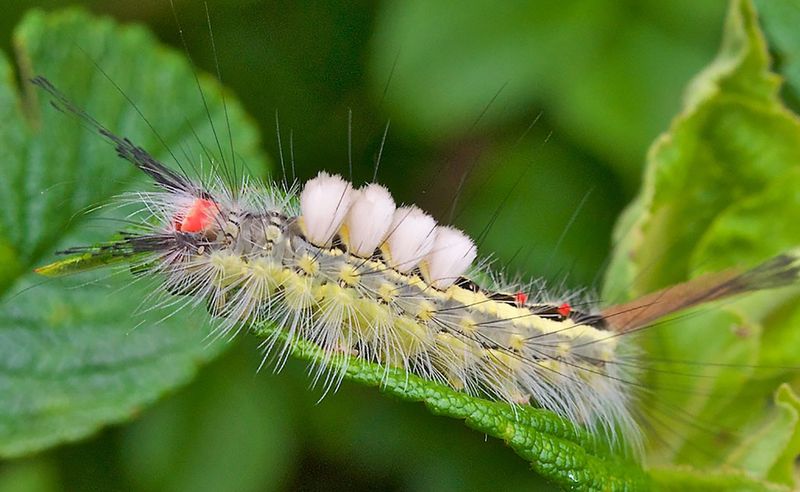
With its mohawk-like tufts of white hair, red head, and yellow body, the white-marked tussock moth caterpillar looks like a tiny punk rocker. This flashy appearance serves as a warning – its hairs cause painful skin irritation and allergic reactions in many people.
Common in eastern North America, these caterpillars feed on over 140 different tree species. Unlike some caterpillars that must touch you to cause harm, their barbed hairs can become airborne and cause respiratory problems if inhaled.
People with asthma or allergies are particularly vulnerable to these floating irritants. The caterpillars often build cocoons on buildings and outdoor furniture, creating hazards in urban environments where people may unknowingly come into contact with them.

